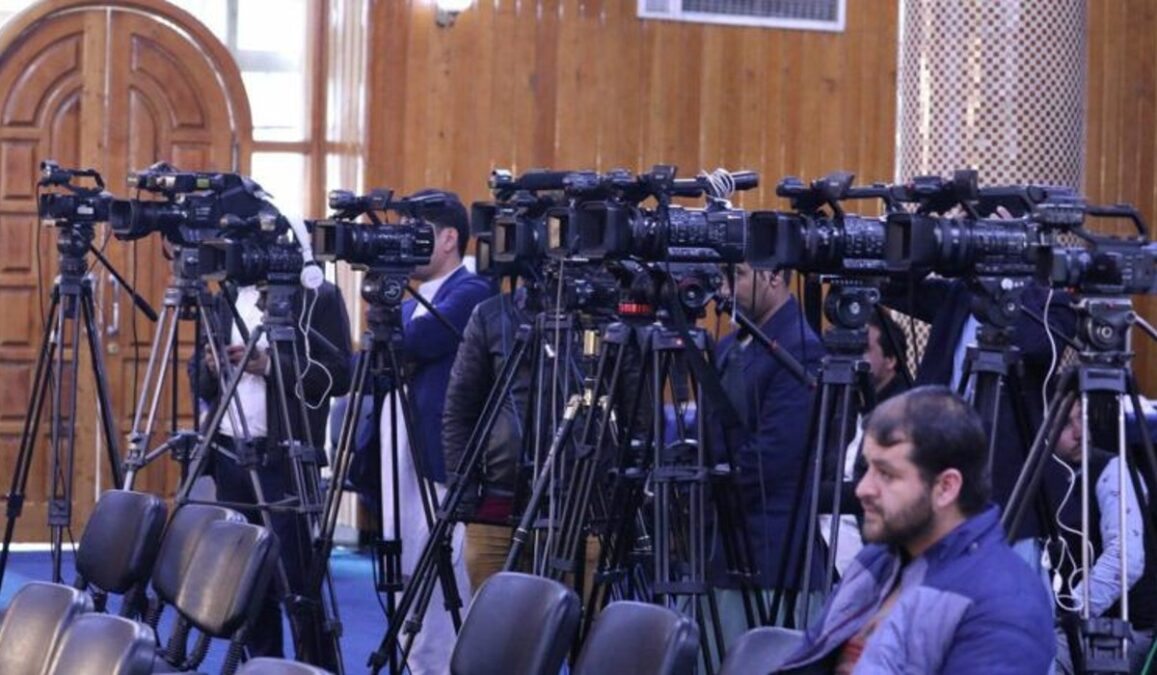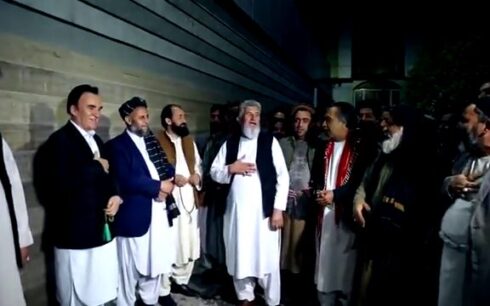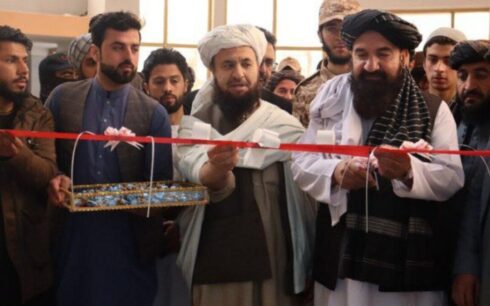Figures provided by sources show that there is no woman in media outlets in at least 17 provinces of Afghanistan while there is a significant decrease in female media workers in the remaining 16 provinces of the country, including the capital Kabul, over the past year.
Panjshir, Parwan, Kapisa, Baghlan, Kunduz, Takhar, Jawzjan, Kandahar, Faryab, Ghor, Nangarhar, Bamiyan, Daikundi, Farah, Ghazni, Wardak, and Sar-e-Pul are the provinces with no female media workers and reporters, according to multiple sources.
The head of a media supporting organization, who wished not to be named over security reasons, confirmed the figures and said that in many provinces, the Taliban has prevented women from working in media outlets.
Another media supporting organization said the reason behind the issue is restrictions imposed by local authorities of Taliban in provinces.
The remaining provinces have 438 female media workers and journalists, including 319 in Kabul and the remaining 119 in 15 other provinces, said Hujatullah Mujaddedi, head of Afghanistan free journalists’ union. But the number is significantly lower than it was in the past year.
“There are few provinces such as Ghazni where female journalists are not allowed to work but unfortunately, in many other provinces, media outlets cannot hire women due to financial problems,” he argued.
Few female journalists are working in media outlets in Herat and Badghis, but there is no woman in other media organizations in the west zone.
A source said that the Taliban has told media outlets that women can work but on the condition that their offices are separate from men’s.
Restrictions
Amu spoke to women from 17 provinces who said the restrictions by the Taliban have prevented them from working in the media and that many of them have faced psychological problems and economic issues after losing their jobs.
Tabasum Popal, a female reporter from Kandahar, said she lost her job due to Taliban restrictions.
Laila Nayil, a former reporter from National TV in Ghor, said the province had seven female journalists but all have lost their jobs over the past year.
She said that she went to her office multiple times but was not allowed by the Taliban. “I was the only breadwinner of my family, but I am jobless now,” she added.
Freshta Farahmand, a journalist from Jawzjan, said female journalists have been prevented by the Taliban from working in media outlets in the province.
To overcome her economic and psychological problems, Farahmand said she has started working in a hospital in the province.
A journalist from Baghlan who wished not to be named over security issues said the Taliban has asked female journalists in the province to avoid working in the media.
A former reporter at National TV in Parwan said she also lost her job and that there is no female journalist in the province after the Taliban takeover.
Psychological problems
Other female journalists who spoke to Amu said they have faced psychological problems over losing their jobs and staying at home for more than one year.
“I was the only breadwinner for my family… I am faced with psychological problems,” said Mahsa Sediqi, a journalist in Takhar who has lost her job.
A female journalist in Bamiyan, who wished not to be named, said Bamiyan had 15 women journalists and media workers under the previous government, but all have lost their jobs over the past year.
“The fear I am faced over my safety has affected my mental health,” she added.
Hameeda, a journalist in Daikundi, said Taliban restrictions have prevented women from working in the media.
Farzana Mohammadi, a journalist from Maidan Wardak, said she has also lost her job and is faced with “psychological problems.”
“I found the job with many difficulties but now I am faced with psychological problems and I am under treatment right now,” she added.
Amu spoke to female journalists from eight other provinces who have also lost their jobs under the Taliban rule.
Sara Sirat, a women’s rights activist, said the restrictions by the Taliban have shown the group is against development, especially for women.
But she added that the Taliban cannot stop women’s progress through such acts.
Taliban spokesman Bilal Karimi did not respond to the Amu reporter’s repeated attempts.
RSF report
A report by Reporters without Borders in August shows that a year after the Taliban takeover of Afghanistan, there has been a 39.59% reduction in the number of media outlets and a 59.86% decrease in the number of journalists working in the country.
Afghanistan had 547 media outlets before 15 August 2021, RSF says, adding that a year later, 219 ceased their activities.
“Of the 11,857 journalists tallied before 15 August 2021, there are only 4,759 now. Women journalists have been impacted most – 76.19% of them have lost their jobs,” the report said.





